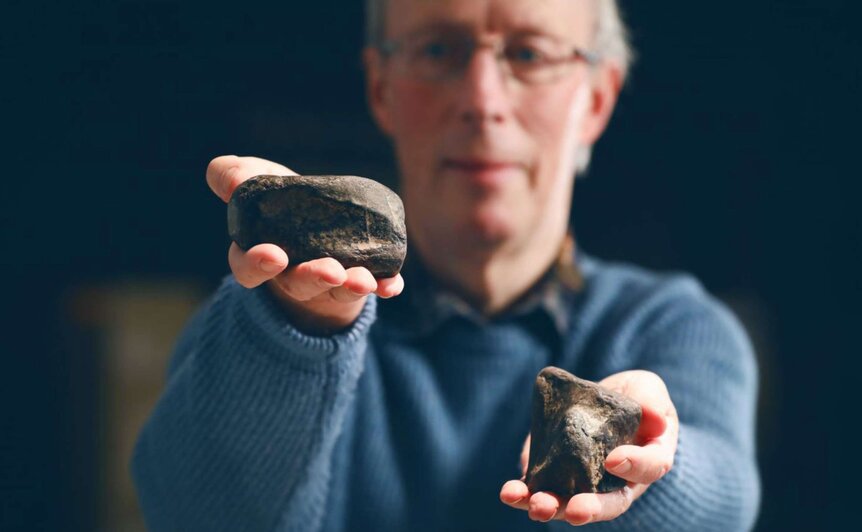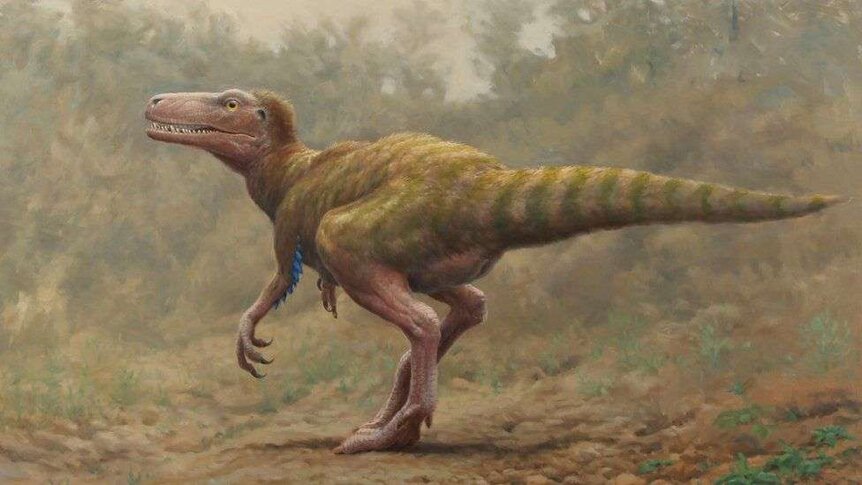Create a free profile to get unlimited access to exclusive videos, sweepstakes, and more!
Luck of the Irish! First-ever dinosaur remains unearthed on the Emerald Isle
Ireland is known as the traditional home of gold-seeking leprechauns, Guinness beer, and the Blarney Stone, but until this year the country sadly had no dinosaur bones to call its very own.
Now Irish paleontologists have excavated the fossilized bones of a pair of Jurassic-era dinosaur species in County Antrim in Northern Ireland, which represent the first official dinosaur specimens ever documented on the Emerald Isle and also some of the rarest remains ever unearthed in Western Europe.
Details of the thrilling find presented in a study conducted by the universities of Portsmouth and Queen's in Belfast were published earlier this month in the online journal, Proceedings of the Geologists’ Association.
“This is a hugely significant discovery,” said Dr. Mike Simms, a curator and paleontologist in the Department of Natural Sciences at National Museums Northern Ireland. “The great rarity of such fossils here is because most of Ireland’s rocks are the wrong age for dinosaurs, either too old or too young, making it nearly impossible to confirm dinosaurs existed on these shores.”
The two specimens were located by the late Roger Byrne, a schoolteacher and amateur fossil collector, who passed along the fossils as part of a collection to the Ulster Museum in Belfast, Ireland.
“The fossils that Roger Byrne found were perhaps swept out to sea, alive or dead, sinking to the Jurassic seabed where they were buried and fossilized,” Dr. Simms explained.
While at first scientists believed both remains came from the same creature, Dr. Simms and his team were excited to learn that that they originated from two totally different dinosaurs. One is a section of femur bone for a four-legged herbivore called Scelidosaurus. The other fossil is a portion of the tibia belonging to a two-legged carnivore with some similarities to Sarcosaurus.
“Analyzing the shape and internal structure of the bones, we realized that they belonged to two very different animals,” said Dr. Robert Smyth, a paleontologist in the School of the Environment, Geography and Geological Sciences at the University of Portsmouth.
“One is very dense and robust, typical of an armored plant-eater," he noted. "The other is slender, with thin bone walls and characteristics found only in fast-moving two-legged predatory dinosaurs called theropods. Despite being fragmentary, these fossils provide valuable insight on a very important period in dinosaur evolution, about 200 million years ago. It’s at this time that dinosaurs really start to dominate the world’s terrestrial ecosystems.”
According to Professor David Martill a fellow colleague also at the School of the Environment, Geography and Geological Sciences, it's entirely possible that Scelidosaurus liked to roam primeval Earth close to the seashore.
“Scelidosaurus keeps on turning up in marine strata, and I am beginning to think that it may have been a coastal animal, perhaps even eating seaweed like marine iguanas do today,” he added.
















